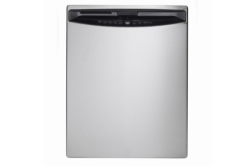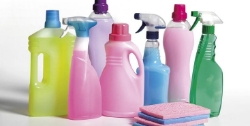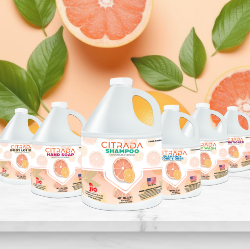-
 Catalog Catalog
Catalog Catalog  Register / Sign In
Register / Sign In- Wishlist (0)
-
 (0)
(0)
- Bed Bath linen
More in Bed Bath linen
- Bed Topper
- Fitted sheets
- Flat Sheets
- Mattress Protectors
- Pillow Case
- Pillow Protectors
- Duvet Insert Comforter
- Fleece Blanket
- Thermal Blanket
- Decorative Coverlets
- Decorative Top Sheet
- Bath Mats
- Bath Towels
- Bathrobe Belt Replacement
- Bathrobes
- Dishcloth
- Gym Towel
- Hand Towel
- Kitchen Towel
- Microfiber Cleaning Towel
- Napkin
- Oven Mitt
- Placemat
- Pool Towel
- Potholder
- Spa Towel
- Tablecloth
- Wash Cloths
- Breakfast and Food
Breakfast and Food
More in Breakfast and Food
- Electronics Appliances
Electronics Appliances
More in Electronics Appliances
- Front Desk
Front Desk
More in Front Desk
- Furniture & Fixture
Furniture & Fixture
- Housekeeping Janitorial Supplies
Housekeeping Janitorial Supplies
More in Housekeeping Janitorial Supplies
- Air Fresheners
- Bath and Tub Care
- Carpet Care
- Dish Care
- Floor Care
- Furniture Care
- Glass Cleaner
- Linen Care
- Laundry Cart
- Vacuum Cleaner
- Cigarette Receptacles
- Multi-Stream Waste & Recycling
- Recycling Containers
- Replacement Parts and Accessories
- Storefront & Forecourt Solutions
- Trash Containers
- Windshield Service Centers
- Utility Carts
- Wire shelving
- Hand Glove Dispensers
- Personal Care Amenities
Personal Care Amenities
More in Personal Care Amenities
- Room Supplies
Room Supplies
More in Room Supplies
- Facial Tissue
- Jumbo Toilet Paper
- Toilet Paper
- Toilet Seat Band
- Toilet Seat Cover
- Kitchen Roll Paper Towels
- Multifold Paper Towels
- Amenity Items
- Caddy Bag
- Cart Bags
- Coffee Condiment Holder
- Coffee Makers Tray
- Cookware
- Facial Tissue Cover
- Garment Racks
- Ice Buckets
- Iron Organizer
- Ironing Board
- Ironing Board Cover
- Luggage Racks
- Mirror
- Shower Curtains
- Waste Basket
- ×
-
 Catalog Catalog
Catalog Catalog  Register / Sign In
Register / Sign In- Wishlist (0)
-
 (0)
(0) - Bed Bath linen
- Breakfast and Food
- Electronics Appliances
- Front Desk
- Furniture & Fixture
- Drapes
- Hardware Collection
- Hospitality Lighting
- Hotel Furniture
- Modern Exotic Furniture
- Outdoor Furniture
- Shop By collection
- Abbot Collection
- Alpine Collection
- Arlington Collection
- Centennial Collection
- Dakota Collection
- Deco Collection
- Earth
- Edison
- Ellsworth Collection
- Geneva Collection
- Keystone Collection
- Lang Essentials
- Lang Vanity
- Marine Collection
- Medora Collection
- Noda Collection
- Quincy Collection
- Rise n Shine Collection
- Rushmore Collection
- Sleep Inn
- Streamline Collection
- Sullivan Collection
- Sylvan Collection
- Shower Essentials
- Mattresses
- Metal Bed Bases
- Housekeeping Janitorial Supplies
- Latest Trends
- Personal Care Amenities
- Room Supplies
- Top Deals
Proposition 65
What is Proposition 65?
Proposition 65, formally known as the Safe Drinking Water and Toxic Enforcement Act of 1986, is a landmark California law aimed at safeguarding public health by reducing exposure to harmful chemicals. The law requires businesses to provide clear and visible warnings if their products, operations, or facilities expose individuals to chemicals that are known to cause cancer, birth defects, or other reproductive harm. These chemicals can be present in everyday items, such as food packaging, electronics, household products, or industrial environments, as well as in emissions that can contaminate air, water, and soil.
The primary goal of Proposition 65 is to inform Californians so they can make educated choices about the products they buy and the environments they enter. By law, businesses must place warning labels on products or post signs in areas where exposure to harmful substances may occur. The law covers a wide range of chemicals, including those naturally occurring or resulting from manufacturing processes. Even the presence of lead in components like control boards or the facilities where products are made may require a warning label, reflecting how stringent the regulations are.


California maintains an official list of chemicals identified as posing a risk to human health, which has grown from fewer than 30 in 1987 to over 900 today. This list is updated annually to reflect new scientific research and regulatory findings. The chemicals include substances found in products like plastics, pesticides, dyes, and solvents, as well as contaminants in water, food, and air.
In addition to the warning requirements, Proposition 65 strictly prohibits businesses from knowingly discharging significant amounts of these chemicals into sources of drinking water, further protecting the state's natural resources and public health.
Voted into law by a 63% majority in 1986, Proposition 65 has become one of the most comprehensive and impactful chemical safety regulations in the United States. It has not only increased transparency for consumers but also driven manufacturers and industries to reduce or eliminate the use of hazardous substances in their products and processes to comply with the law.
Subscribe to get latest information about products, discounts and more
 +1 (442) 200-1110
+1 (442) 200-1110

 Bed and Pillow Protectors
Bed and Pillow Protectors  Blankets and Comforters
Blankets and Comforters  Decorative Bedding
Decorative Bedding  Hotel Towels
Hotel Towels  Coffee & Condiments
Coffee & Condiments  Cups and Lids
Cups and Lids  Kitchen Cutlery
Kitchen Cutlery  Air Conditioner
Air Conditioner  Alarm Clock
Alarm Clock  Coffee Makers
Coffee Makers  Combo Fridge Microwave
Combo Fridge Microwave  Commercial Safe
Commercial Safe  Cooktop
Cooktop  Dishwasher
Dishwasher  Bellman's Carts
Bellman's Carts  Drapes
Drapes  Hardware Collection
Hardware Collection  Hospitality Lighting
Hospitality Lighting  Hotel Furniture
Hotel Furniture  Mattresses
Mattresses  Metal Bed Bases
Metal Bed Bases  Cleaning Chemicals
Cleaning Chemicals  Cleaning Equipments
Cleaning Equipments  Hotel Waste & Facility Solutions
Hotel Waste & Facility Solutions  Housekeeping Essentials
Housekeeping Essentials  Housekeeping Safety Essentials
Housekeeping Safety Essentials  Bulk Gallon Amenities
Bulk Gallon Amenities  Dispenser Amenities
Dispenser Amenities  Make up Remover Wipes
Make up Remover Wipes  Mini Bathroom Amenities
Mini Bathroom Amenities  Bath and Facial Tissue
Bath and Facial Tissue  Paper Towels
Paper Towels  Room Accessories
Room Accessories  Trash Liners
Trash Liners 




